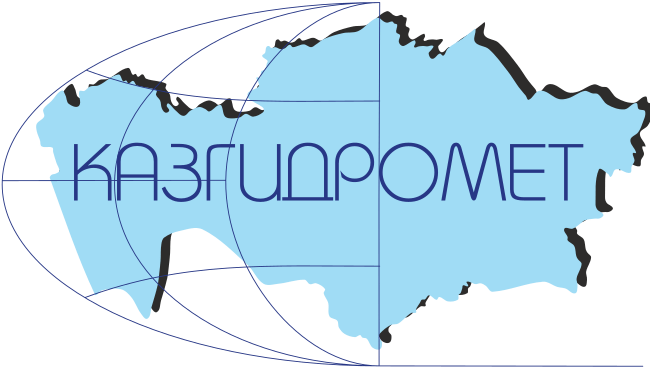THE CURRENT STATE OF AGRICULTURAL AND NATURAL COMPLEXES OF THE LOWER RIVER SHU
DOI:
https://doi.org/10.54668/2789-6323-2025-119-4-22-34Keywords:
water supply, water management infrastructure, field studies, regulation, managementAbstract
The complete regulation and intensive economic use of the runoff of the Shu River basin had a significant impact on the water regime of the lower ecosystem, its flora and fauna, social, household and economic conditions of the population. The reason is the shortage of water, especially in low-water years, which also creates prerequisites for contradictions between the states of the basins of transboundary rivers. In this regard, field studies have been conducted with a comprehensive analysis, development of recommendations and measures to ensure rational planning of water use and water distribution in the lower reaches of the Shu River. Based on the results of which the solution of urgent problems of conservation of agricultural and natural complexes of the river basin is proposed.
References
Оценка потребностей для сохранения важных глобально значимых водно-болотных угодий в бассейне реки Шу (в пределах территории Казахстана) // Отчет о научно-исследовательской работе. – Офис программ ОБСЕ в Астане. – Астана, 2023. – 104 с.
Sahana M., Dhali M.K., Lindley S. (2024). Global disparities in transboundary river research have implications for sustainable management. Communications Earth & Environment. Vol. 5, № 786. DOI: 10.1038/s43247-024-01928-0.
Yu Y., Bo Y., Castelletti A. (2024). Transboundary cooperation in infrastructure operation generates economic and environmental co-benefits in the Lancang-Mekong River Basin. Nature Water. Vol. 2. pp. 589–601. DOI: 10.1038/s44221-024-00246-1.
Mohammed Y.A., Acer Y. (2024). Management of Transboundary Watercourse in Euphrates-Tigris and Nile River Basins. Land and Water Degradation in Ethiopia. Springer Geography. Springer, Cham. pp. 341–360. DOI: 10.1007/978-3-031-60251-1_15.
Arfa A., Ayyoubzadeh S.A., Shafizadeh-Moghadam H. (2025). Transboundary hydropolitical conflicts and their impact on river morphology and environmental degradation in the Hirmand Basin, West Asia. Sci Rep. Vol. 15, № 2754. DOI: 10.1038/s41598-024-84501-1.
Mahmoodzadeh D., Morid S. Ketabchi H. (2025). Assessment of water resources sustainability under unilateral development projects using WEAP model in transboundary river basins. Environ Sci Pollut Res. Vol. 32. pp. 6130–6152. DOI: 10.1007/s11356-025-36063-6.
Fu J., Lu T., Xu B. (2024). Water Resources Allocation in a Transboundary River Based on a Rubinstein Bargaining Model. Water Resour Manage. Vol. 38. pp. 639–663. DOI: 10.1007/s11269-023-03691-x.
Sivokhip Z.T., Chibilev A.A. (2022). Transboundary River Basins: Basic Principles for Solving the Problems of Interstate Cooperation. Geogr. Nat. Resour. Vol. 43. pp. 218–227. DOI: 10.1134/S1875372822030118.
Ibrayev T., Li M., Bakbergenov N., Panenka P., Batyrbayeva A. (2022). Problems of the use of water resources and the ways of their solution in Kazakhstan. NEWS of the National Academy of Sciences of the Republic of Kazakhstan. Series of geology and technical sciences. Vol. 4, № 454. pp. 69–80. DOI: 10.32014/2022.2518-170X.201.
Faraz Ul Haq, Ahma, I., Khan N.M. (2024). Climate Change, Water Variability, and Cooperation Along Transboundary River Basins in Perspective of Indus Water Treaty. The Water, Climate, and Food Nexus. Springer, Cham. pp. 457–473. DOI: 10.1007/978-3-031-50962-9_20.
Jaiswal H., Kumar P. (2025). Transboundary Rivers of South Asia: Issues and Challenges. Land and Water Nexus in South Asia. Advances in Asian Human-Environmental Research. Springer, Cham. pp. 137-179. DOI: 10.1007/978-3-031-87429-1_5.
Переход к интегрированному управлению водными ресурсами (ИУВР) в низовьях и дельтах рек Амударьи и Сырдарьи // Предварительное обоснование. – Научно-информационный центр Межгосударственная координационная водохозяйственная комиссия Центральной Азии (НИЦ МКВК). – Ташкент, 2005. – 198 с.
Дускаев К.К, Жанабаева Ж.А. Природоохранные и экологические попуски как основа в сохранении водных экосистем в нижнем течении рек // Вестник казахстанско-немецкого университета: Устойчивое развитие Центральной Азии. – №2 (4). – Алматы, 2014. – С. 168–171.
Отчеты о заборе, использовании и водоотведении вод // Жамбылский филиал Республиканского государственного предприятия «Казводхоз». – Тараз, 2019–2024 гг.
Схема комплексного использования и охраны водных ресурсов бассейна р. Шу. (Обновление СКИОВР 2007 г.) // Сводная записка. - ПК «Институт Казгипроводхоз». – Алматы, 2017. – 133 с.
Соглашения между Правительством Республики Казахстан и Правительством Кыргызской Республики об использовании водохозяйственных сооружений межгосударственного пользования на реках Шу и Талас // Астана, 2000. – 2 с.
Положения о делении стока р. Чу // Министерство мелиорации и водного хозяйства СССР от 24.02.1983 г. – М., 1983. – 7 с.
Downloads
Published
How to Cite
Issue
Section
License
Copyright (c) 2025 Турсун Ибраев, Марина Ли, Нурлан Бакбергенов, Талгат Иманалиев, Нурлан Балгабаев

This work is licensed under a Creative Commons Attribution-NonCommercial 4.0 International License.





